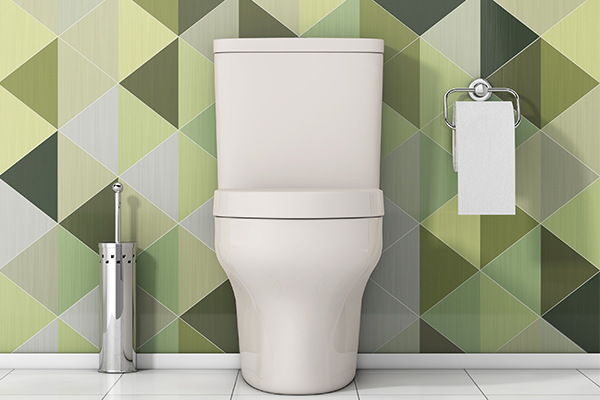“Why is my poop green?”
It’s a question we’ve all likely asked ourselves at one time or another.
The porcelain throne holds few mysteries, but gazing into its depths can certainly trigger revulsion, curiosity, even horror.
Because that color—it can’t be normal, can it?
Actually, yes, it can.
“Stool can be a rainbow,” said Dr. Satish Rao, a gastroenterologist at Augusta University Digestive Health Center. “While brown is the predominant and normal color, stool can be green, pale, yellow/green, black, even red, and there are a wide range of reasons why.”
First, let’s talk about what stool texture means
When it comes to normal stool, consistency is just as important as color, said Rao.
Physicians categorize stools according to the Bristol Stool Chart, which covers seven different consistencies, all with oh-so-appealing descriptions:
-
Types 1 and 2 (constipation):
Hard, nut-like lumps or sausage-shaped but lumpy;
-
Types 3 to 5 (normal):
Sausage-shaped stools with cracks, smooth and soft snake-like stools or soft blobs with clear-cut edges;
-
Types 6 and 7 (diarrhea):
Mushy stool that appears fluffy or watery, entirely liquid stools.
All of us will go through periods of constipation or diarrhea throughout our lifetimes, but what you want to watch out for is a trend: Can more than 50 percent of your poops be categorized as Type 1/2 or Type 6/7? And are they causing symptoms that are interfering with your quality of life?
“Then it might be cause to see a physician,” Rao said.
The color question
So back to color: If you could peek into your torso, you’d realize that the “normal” color of your stool as it goes through the digestive tract is actually a bright greenish-yellow, thanks to bile delivered from the liver to help us digest food. Stool becomes a more accustomed brown the longer it remains in the colon.
“If your stool is green or yellow, it usually means that it is moving very rapidly through the colon,” Rao said.
Oftentimes, that’s due to some type of diarrheal disease, whether that’s food poisoning or a viral illness.
But if your normal-shaped stool is bright green, think about what you may have eaten. High-chlorophyll plants like spinach or even the green food coloring in birthday cake can all end up tinting your stool.
In fact, any kind of food coloring (Berry Blue Kool-Aid, anyone?) along with color-rich foods like beets can brighten up your stool. White stools can be due to bismuth subsalicylate (otherwise known as Pepto-Bismol) or antacids. On the other end of the color spectrum, black stools can be the result if you drink a dark beer like Guinness or ingest iron supplements, and Pepto-Bismol, strangely enough, can also cause your stools to be black.
Other times, certain illnesses can turn your stool a different color
For example:
-
Clay or pale-colored stools:
This can indicate that you have little to no bile in your stool, due to jaundice or a bile duct obstruction. Stools that are white and contain mucus can mean some type of bowel irritation. And pale stools that float and are smelly can be a sign of malabsorption due to an enzyme deficiency or celiac disease.
-
Black stools:
A tarry, black stool with a strong smell can be the result of bleeding in the upper gastrointestinal tract, anywhere from the esophagus down to the beginning of the colon.
-
Maroon or red stools:
These stools indicate bleeding in the colon, which could be due to a hemorrhoid or fissure at the anus or a problem deeper within the colon.
While one stool that’s a strange color may not be a cause for concern, a pattern—especially if you know the color is not related to eating too much of a certain color of food—may mean you need to visit a doctor. Persistent black stools (two days or more) or more than one maroon or bright red stool mean you need to see a physician immediately.
“It’s an old saying: What goes in must come out,” Rao said. “In most cases, the color of your stool is simply related to something you’ve eaten. But certain colors like black and red can be alarm signs that you shouldn’t ignore, particularly if you are also experiencing other symptoms such as pain or dizziness.”





